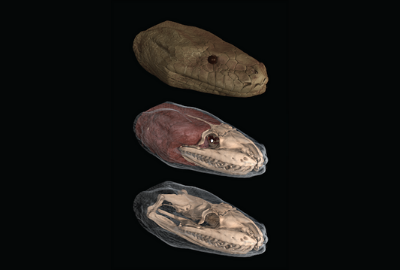Science Education and Outreach
We equip teachers with the knowledge and resources they need to accurately teach evolution, climate change, and the nature of science.
We equip teachers with the knowledge and resources they need to accurately teach evolution, climate change, and the nature of science.

Speciation is the evolutionary process that results in new species. Understanding speciation allows scientists to understand how the tree of life developed over time. This lesson set features the speciation of squamates – scaled reptiles like lizards and snakes. Students investigate the genetic and environmental factors that led to limb reduction and examine how one suborder of this group, the Serpentes, flourished thanks to this adaptation.
This lesson set was updated June 1, 2022.
DCIs (Disciplinary Core Ideas)
HS-LS4.A: Evidence of Common Ancestry and Diversity
HS-LS4.C: Adaptation
Performance Expectations
Other Relevant NGSS References:
This is a beta version of Lesson Set One.